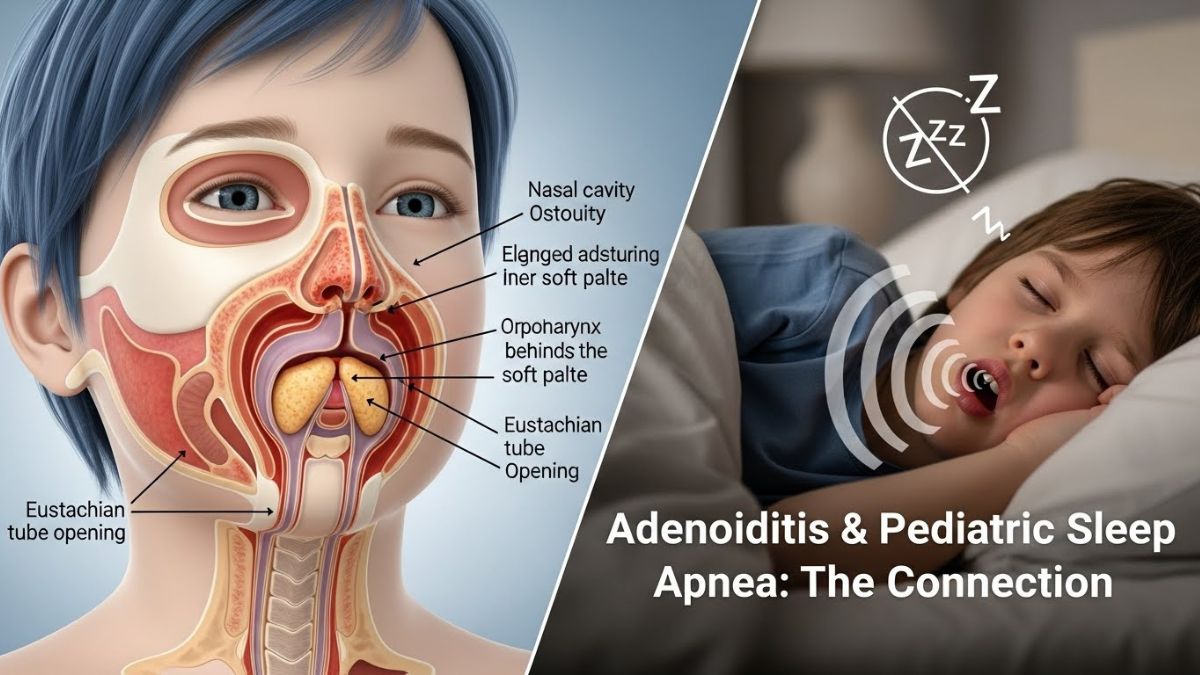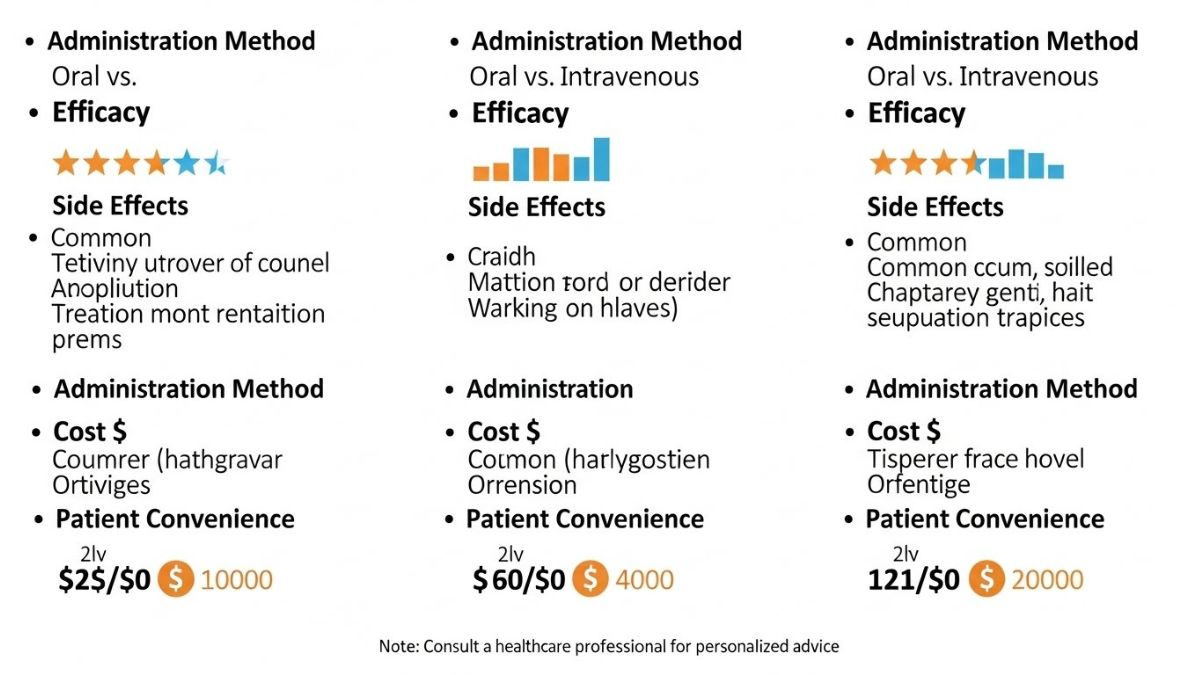HEALTH
Wellness at Work: How Office Pods Can Reduce Stress and Boost Creativity

The modern workplace is a dynamic environment, where employees are expected to be productive, innovative, and collaborative. However, these high expectations can often lead to stress, burnout, and a dip in creativity. Finding ways to enhance wellness at work is critical to both individual and organizational success. Enter office pods—an increasingly popular addition to office furniture that can transform the workplace by offering a sanctuary of focus and tranquility. These innovative workspaces are designed to reduce stress and ignite creativity, creating a healthy balance between collaboration and concentration.
The Rise of Office Pods in Modern Workspaces
Office pods are compact, self-contained spaces designed to provide privacy and minimize distractions. Whether in open-plan offices or coworking spaces, the concept of office pods is rooted in the need for flexibility. Modern work environments can be noisy and chaotic, with employees constantly juggling meetings, phone calls, and discussions with colleagues. Office pods provide a retreat from these distractions, enabling employees to focus, refresh, and recharge.
As wellness at work becomes an increasingly important focus for companies, office pods are emerging as one of the best solutions. By blending privacy with comfort, they allow employees to escape the overstimulation of open office layouts while still remaining connected to the workplace. The growing trend toward hybrid and remote working models also emphasizes the need for these personal spaces, where employees can engage in uninterrupted creative work or private meetings.
How Office Pods Reduce Stress
Privacy and Personal Space
One of the primary ways office pods reduce stress is by providing a private space for employees to unwind or concentrate on a task. In an open-plan office, it can be difficult to find moments of solitude, leading to cognitive overload and anxiety. Office pods offer an immediate solution by providing a quiet, secluded environment where employees can take a break from the surrounding hustle.
Psychologically, having access to personal space can significantly reduce stress levels. When employees feel that they have a place to retreat to, they are less likely to feel overwhelmed or overstimulated. Even short periods of time spent in an office pod can allow for moments of calm and mindfulness, which can be particularly helpful in reducing work-related stress.
Noise Reduction and Focus
Noise pollution is a major cause of stress in the workplace. Whether it’s the constant hum of conversations, phone calls, or office equipment, excessive noise can elevate stress hormones and negatively affect both mental and physical health. Office pods are designed with noise reduction in mind, often incorporating soundproofing technology to block out distractions.
By reducing noise levels, office pods create an environment conducive to deep work and focus. Employees can use this quiet space for tasks that require intense concentration, such as writing, coding, or brainstorming. The ability to work in a peaceful environment without external disturbances not only lowers stress levels but also increases job satisfaction and productivity.
Encouraging Breaks and Mental Health
Taking regular breaks is essential for maintaining mental wellness at work, but many employees skip breaks when they feel overwhelmed or pressed for time. Office pods encourage employees to step away from their desks and take a mental health break. The physical act of leaving a noisy, open area for a peaceful pod can serve as a reset, helping to reduce stress and refresh the mind.
Moreover, these pods can be used for short periods of meditation, reading, or simply relaxing in between tasks. Some companies even equip their pods with wellness features, such as soft lighting, ergonomic furniture, and calming décor, creating an atmosphere that promotes relaxation and rejuvenation.
Boosting Creativity with Office Pods
A Space for Innovation
Creativity thrives in environments that foster both focus and freedom. Office pods provide the ideal setting for employees to explore their creativity without the pressures of their usual workspace. These small, quiet spaces allow employees to think more freely, free from interruptions and distractions.
For many workers, brainstorming in a bustling office can stifle creativity. Office pods give employees the privacy they need to sketch ideas, map out strategies, or solve complex problems. By stepping away from the noise and finding refuge in a quiet pod, employees can unleash their creative potential.
Enhancing Collaboration Through Separation
While office pods are often seen as solitary workspaces, they can also play a crucial role in collaboration. Many office pods are designed to accommodate small groups, allowing team members to meet, brainstorm, or discuss ideas in a focused, undisturbed environment.
Creativity often flourishes in small, intimate settings where people feel comfortable sharing and refining their ideas. Office pods foster this kind of environment by providing an alternative to the traditional conference room, which can sometimes feel too formal or distracting. Smaller, quieter spaces make team collaboration feel more relaxed and focused, leading to better outcomes.
Reducing Cognitive Fatigue
Cognitive fatigue is a major barrier to creativity. When the brain is overloaded with information and distractions, it becomes difficult to generate new ideas or think innovatively. Office pods help combat cognitive fatigue by offering a space where employees can engage in single-tasking—focusing on one project or idea at a time without the cognitive strain of multitasking.
In a calm and quiet pod, employees are more likely to experience “flow,” the psychological state where creativity and productivity peak. By allowing the mind to rest and refocus, office pods enable employees to return to their work refreshed, energized, and ready to approach tasks with a creative mindset.
Creating a Healthier, More Creative Workplace
The integration of office pods into a workspace goes beyond providing employees with privacy—it represents a shift toward promoting wellness at work. As companies recognize the importance of employee well-being, office pods offer an effective solution for creating healthier, more productive environments.
Office furniture plays a vital role in shaping the overall atmosphere of a workplace, and office pods are becoming a key element of modern office design. By offering employees a refuge from the stress and distractions of daily work life, office pods help foster a culture of balance, creativity, and mental well-being.
Incorporating these private, flexible spaces into the workplace not only helps employees manage stress but also boosts creativity, productivity, and overall job satisfaction. As the nature of work continues to evolve, the use of office pods is likely to become an essential feature in workplaces that prioritize the health and well-being of their employees.
HEALTH
Exploring the Connection Between adenoidid and Sleep Apnea in Children

Adenoidid, or inflammation of the adenoids, can lead to serious sleep issues like sleep apnea in children. Understanding the connection between these two conditions is crucial for parents who want their kids to enjoy peaceful nights and energetic days. Join us on this journey as we explore what adenoids are, how they relate to sleep apnea, and what steps you can take toward ensuring your child gets better sleep.
What are Adenoidid and Sleep Apnea?
Adenoidid are small masses of lymphatic tissue located at the back of the nasal cavity. They play an essential role in the immune system, helping to trap and filter out bacteria and viruses that enter through the nose. While they are most prominent in young children, adenoids often shrink with age.
Sleep apnea is a sleep disorder characterized by repeated interruptions in breathing during sleep. In children, this can manifest as loud snoring or periods where breathing stops altogether. The condition disrupts restful sleep and can lead to various health issues if left untreated.
The connection between adenoids and sleep apnea lies primarily in size and inflammation. Enlarged adenoids can obstruct airways during sleep, making it harder for children to breathe properly. This obstruction may result in disturbed sleep patterns, leading parents to seek answers about their child’s restless nights.
The Prevalence of Adenoidid and Sleep Apnea in Children
Adenoidid and sleep apnea are increasingly common in children. Research indicates that around 1% to 5% of kids suffer from obstructive sleep apnea, often linked to enlarged adenoids.
Adenoids play a critical role in the immune system but can become inflamed due to infections or allergies. This inflammation can lead to breathing difficulties during sleep, contributing to sleep apnea symptoms.
The prevalence varies by age group. Younger children tend to be more affected as their adenoid tissues are larger relative to their airway size. As they grow, some may see an improvement as the face matures and airways expand.
Awareness among parents and caregivers is crucial. Recognizing signs early on ensures timely medical intervention, improving children’s overall health and quality of life significantly.
Symptoms and Warning Signs of Adenoidid and Sleep Apnea
Adenoidid and sleep apnea can manifest through several noticeable symptoms in children. One of the most common signs is persistent nasal congestion. This can lead to mouth breathing, which often disturbs normal sleep patterns.
Frequent snoring is another red flag. Parents might notice that their child snores loudly or has irregular breathing during sleep. These disruptions can make for restless nights, affecting daytime alertness.
Children may also experience difficulty swallowing or have a sore throat due to enlarged adenoids. Behavioral changes, including irritability and trouble concentrating, may arise as well.
If your child exhibits these symptoms consistently, it’s essential to seek medical advice promptly. Early detection plays a crucial role in managing both conditions effectively and improving quality of life for your little one.
How Adenoidid Can Lead to or Worsen Sleep Apnea
Adenoidid refers to the inflammation of the adenoids, which are small masses of lymphatic tissue located at the back of the nasal cavity. When these tissues become swollen due to infection or allergies, they can obstruct airflow during sleep.
This blockage is significant when it comes to sleep apnea in children. As Adenoidid narrows air passages, breathing may become irregular or briefly stop during sleep. This condition disrupts a child’s rest and affects overall health.
Children suffering from Adenoidid often exhibit snoring and labored breathing at night. These symptoms can escalate into more severe forms of sleep apnea if left untreated. Persistent obstruction not only hampers restful sleep but can also lead to behavioral issues and learning difficulties.
Addressing Adenoidid early on is crucial for preventing complications related to sleep apnea. Reducing inflammation opens up those vital airways again, promoting better nighttime breathing patterns.
Treatment Options for Adenoidid and Sleep Apnea
When addressing Adenoidid and sleep apnea, several treatment options are available. For mild cases of adenoid enlargement, monitoring may be sufficient. Parents should keep an eye on symptoms and ensure proper care.
In more severe instances, medications like nasal corticosteroids can help reduce inflammation. Antibiotics might be prescribed if there’s a bacterial infection involved.
Surgical intervention is often considered when symptoms persist or worsen. Adenoidectomy, the surgical removal of the adenoids, can provide significant relief for children suffering from obstructive sleep apnea caused by enlarged adenoids.
Continuous Positive Airway Pressure (CPAP) therapy is another option for those diagnosed with sleep apnea. This device helps maintain open airways during sleep.
Each child’s situation is unique; thus, working closely with a pediatrician or an ENT specialist ensures tailored treatment strategies that address their specific needs effectively.
Importance of Early Diagnosis and Management
Early diagnosis of Adenoidid is crucial for children. When left untreated, swollen adenoids can lead to various complications, including sleep apnea. Recognizing symptoms promptly helps in addressing the issue before it escalates.
Management plays a key role in a child’s overall health and development. Poor sleep quality from conditions like sleep apnea can affect concentration and behavior during the day. Early intervention ensures that children get adequate rest.
Parents should be vigilant about changes in their child’s sleeping patterns or breathing habits while asleep. Regular check-ups with healthcare professionals are essential for monitoring any signs of adenoid enlargement or inflammation.
The right treatment plans might involve lifestyle adjustments or medical interventions tailored to each child’s needs. Timely action fosters better outcomes and improves quality of life for affected children, making early diagnosis an important step toward healthier futures.
Conclusion:
Adenoidid and sleep apnea are pressing concerns for many children. Understanding the connection between these two conditions is essential for parents, caregivers, and healthcare professionals. Adenoids play a vital role in our immune system but can become problematic when they swell due to infection or other factors.
Recognizing the prevalence of Adenoidid and its link to sleep apnea helps in early identification and intervention. Symptoms such as snoring, restless sleep, or daytime fatigue should never be overlooked. If a child exhibits these signs alongside recurrent ear infections or nasal congestion, further evaluation may be necessary.
The relationship between swollen adenoids and obstructive sleep apnea is significant. Enlarged adenoids can block airways during sleep, leading to disrupted breathing patterns that affect overall health and development. Managing this condition through appropriate treatment options can greatly improve a child’s quality of life.
HEALTH
How valgensin Compares to Other Treatments: A Comparative Analysis

Valgensin is making waves in the world of medical treatments, captivating both patients and healthcare professionals alike. As new therapies emerge, many are left wondering: how does valgensin stack up against traditional medications? With a unique approach to treatment, it’s essential to explore what sets valgensin apart. This comparative analysis dives deep into its benefits, potential side effects, effectiveness rates, and real patient experiences. Whether you’re considering a switch or simply curious about this innovative option, let’s unravel the differences together.
Comparison to traditional medications
When examining valgensin, it’s essential to compare it to traditional medications. Many patients have long relied on standard treatments for their health issues. These often come with a host of side effects and varying degrees of effectiveness.
Traditional medications can take time before any noticeable results appear. For some, this leads to frustration and discontinuation of treatment altogether. In contrast, valgensin aims for quicker relief without the prolonged waiting period associated with many conventional drugs.
Additionally, traditional options may require frequent dosing throughout the day. Valgensin offers more flexible administration schedules that fit better into modern lifestyles.
Cost is another factor where valgensin has an edge. While some older medications can be expensive due to ongoing prescriptions or additional therapies needed, valgensin presents a potentially more cost-effective solution over time.
Advantages of valgensin over other treatments
Valgensin stands out in the realm of treatment options due to its unique mechanism. Unlike traditional therapies, it targets specific pathways in the body, offering a more tailored approach. This precision can lead to enhanced outcomes for patients.
One notable advantage is the reduced frequency of administration. Many patients appreciate less frequent dosing schedules compared to daily medications. This convenience often translates into improved adherence and better overall management.
Additionally, valgensin boasts a favorable side effect profile. Many users report fewer adverse reactions than those experienced with conventional treatments, making it an attractive option for sensitive individuals.
Another appealing aspect is its compatibility with other therapies. Patients can integrate valgensin into their existing regimens without significant interactions, allowing for a comprehensive treatment strategy that maximizes benefits while minimizing risks.
Side effects and safety concerns
When considering valgensin, it’s essential to understand its safety profile. Like any medication, it can come with side effects. Common reactions include mild headaches and gastrointestinal disturbances. These are generally short-lived.
Serious adverse events are rare but possible. Patients should remain vigilant for symptoms like unusual fatigue or allergic reactions. Discussing any pre-existing conditions with a healthcare provider is crucial before starting treatment.
Monitoring during the initial phase of using valgensin is important. Regular check-ins can help manage any emerging issues effectively.
Reports suggest that most users tolerate this treatment well, experiencing minimal disruptions in daily life compared to other options available on the market.
It’s always wise to weigh potential risks against benefits when exploring treatments like valgensin, ensuring informed decisions tailored to individual health needs.
Effectiveness and success rates
Valgensin has gained attention for its effectiveness in treating various conditions. Clinical studies indicate promising success rates, often outperforming traditional therapies.
Patients frequently report noticeable improvements in their symptoms within weeks of starting Valgensin. This swift onset can be a game-changer for those seeking relief from chronic issues.
Moreover, the medication appears to maintain its efficacy over time, unlike some alternatives that may lose potency with prolonged use.
Many healthcare providers are increasingly recommending Valgensin, citing strong clinical evidence supporting its benefits.
Patient feedback adds another layer of insight into its performance. Numerous testimonials highlight significant quality-of-life enhancements attributed to the treatment.
These factors contribute to Valgensin’s growing reputation as a reliable option among available treatments today.
Patient experiences and testimonials
Patient experiences with valgensin have been diverse and insightful. Many users report a significant improvement in their condition, noting how this treatment has changed their daily lives.
One patient shared that after starting valgensin, they felt more energetic and engaged in activities they once avoided. The emotional uplift was just as important as the physical benefits for them.
Another individual highlighted the ease of integrating valgensin into their routine. They appreciated not having to deal with complicated dosing schedules or frequent doctor visits.
Testimonials often emphasize the supportive community surrounding valgensin. Patients find comfort in sharing their stories and connecting with others on similar journeys.
The feedback also reflects a sense of empowerment among users, who feel more in control of managing their health challenges through this innovative treatment option.
Conclusion:
The landscape of medical treatments is constantly evolving, and valgensin stands out as a noteworthy option. Its unique mechanism sets it apart from traditional medications, offering patients an innovative choice for managing their conditions.
When comparing valgensin to conventional therapies, its advantages become apparent. Many users report fewer side effects and improved tolerability, making it a more appealing option for those who have struggled with other treatments. Safety remains a top priority, and ongoing studies continue to explore the long-term implications of using this novel therapy.
Effectiveness is crucial in any treatment plan. Valgensin shows promising results that rival established medications while often delivering quicker relief for patients seeking answers to their health challenges. The testimonials shared by individuals who’ve experienced its benefits add a compelling layer to its reputation.
HEALTH
Why SSRIs Don’t Work the Same for Everyone: Genesight Helps Find Out

Today, SSRIs are among the most commonly prescribed medications for mental health conditions such as depression, anxiety, PTSD, and even OCD. As well as some other conditions that these medications are known to be able to help with. They are a newer class of antidepressants that has shown to have quite some positive effects, and mild side-effects, so it is no wonder that psychiatrists are relying on them when trying to determine the right course of treatment for their patients.
Now, you may have already heard some amazing stories about how SSRIs helped some people overcome their anxiety and depression symptoms. They help regulate emotional response and mood, as well as our sleep, our appetites, and much, much more. So, clearly, their effects can undoubtedly be amazing, and it is not a surprise that a lot of people are reporting great things after taking them.
Yet, apart from that, you may have also heard some people claiming that they didn’t get the effects they have been expecting from SSRIs. That they didn’t get much help, and that they have possibly experienced nothing but some side-effects. So, now you’re wondering how it is possible that these medications don’t work the same for everyone, and why it is that we can all have such different experiences with them.
Well, that is an important question right there. What we are going to do now, thus, is answer it for you, hoping to clearly explain why those differences are normal, while also letting you know how you may be able to check in advance what kinds of effects you could expect if your doctor prescribed these medications to you. If you’ve come across Genesight or similar professionals already, then you know that leaving things up to chance is not always necessary, as there are methods for checking this in advance. More on that later, though.
In short, we’re talking about genetic risk factors, and you can read more about that here: https://www.nature.com/articles/s43856-021-00046-8
Why SSRIs Don’t Work the Same for Everyone
Okay, let us now answer the first important question for you right here. To put things simply, you want to know why it is that you are hearing different stories regarding SSRIs from different people. Simply saying that this is normal and moving on with it probably doesn’t cut it. In other words, you want to know why these mediations don’t work the same for everyone, and we are now going to discuss precisely that.
One of the biggest reasons to be aware of here is the fact that our bodies process medications at different speeds, and that is due to some genetic differences in our metabolism. So, you may metabolize the drug more slowly or more quickly than someone else, which leads to having different experiences with SSRIs. Even when you are taking the same drug as someone else and the same dose.

Now, as you probably already know, SSRIs work by blocking the serotonin transporter, which is basically a protein that reabsorbs serotonin in the brain. And, well, there are some genetic transporter variations that can affect how strongly the SSRIs will be able to bind, how quickly the symptoms will respond to the drug, how well serotonin signaling will improve in general, as well as what kinds of side-effects you could wind up experiencing. This is another reason why these medications can work perfectly for some people, while not working that well for others.
Of course, the differences in serotonin receptors can have similar effects here. Basically, genetic differences in those receptors can affect the actual effectiveness of SSRIs, as well as how quickly they will lead to improvements, and, once again, whether some side effects will emerge. In short, the unique receptor profile of your brain is sure to affect your response to these medications.
We also cannot fail to mention that some co-occurring conditions can also play a part here. For instance, if you’re fighting depression, you may also be struggling with anxiety, PTSD, chronic pain or other things, and all of those things will impact how your brain responds to SSRIs. And, in the end, your lifestyle and the environmental factors can affect the response as well.
How Genetics Can Be Helpful in Finding Out What to Expect
Now, you often can’t change the environmental factors. What you can do when you get prescribed an FDA Approved SSRI for Depression, for example, is take some genetic tests to try and determine how you would respond. This is often done before being prescribed a specific drug, as it helps professionals understand your unique profile and thus find the best medication for you.
That is, as you may have guessed it, where Genesight and similar providers come in. Allowing you to do the genetic testing and thus get valuable clues about how your body will respond to certain SSRIs. These tests are rather valuable for clinicians, as well as for patients, because they can help find the best medication quickly.
-

 GENERAL2 years ago
GENERAL2 years agoDiscovering the Artistic Brilliance of Derpixon: A Deep Dive into their Animation and Illustration
-

 Posts2 years ago
Posts2 years agoSiegel, Cooper & Co.
-

 Lifestyle2 years ago
Lifestyle2 years agoPurenudism.com: Unveiling the Beauty of Naturist Lifestyle
-

 HEALTH2 years ago
HEALTH2 years agoTransformative Health Solutions: Unveiling the Breakthroughs of 10x Health
-

 FASHION2 years ago
FASHION2 years agoThe Many Faces of “λιβαισ”: A Comprehensive Guide to its Symbolism in Different Cultures
-

 Lifestyle2 years ago
Lifestyle2 years agoBaddieHub: Unleashing Confidence and Style in the Ultimate Gathering Spot for the Baddie Lifestyle
-

 Entertainment2 years ago
Entertainment2 years agoGeekzilla Podcast: Navigating the World of Pop Culture, Gaming, and Tech
-

 Lifestyle1 year ago
Lifestyle1 year agoSandra orlow: Unraveling the Story of an Iconic Figure
